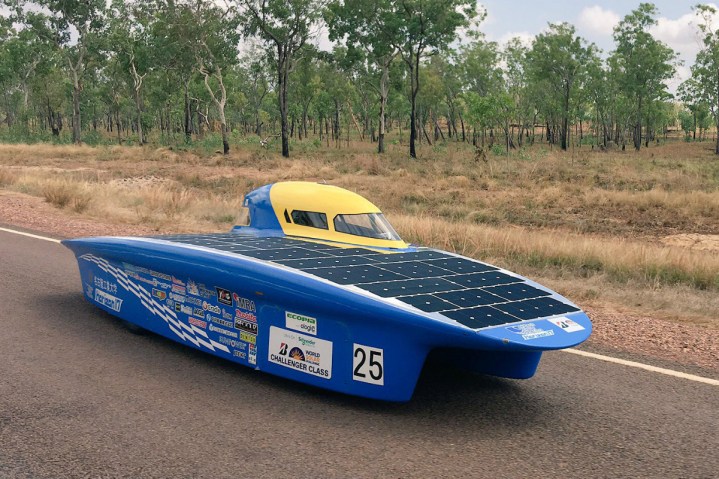
Aimed at inspiring research and development work in sustainable road transport, the 30th anniversary of the 1,860-mile race kicked off on Sunday with 42 solar-panel-laden cars from 40 countries hitting the road across three classes of vehicle.
The Challenger category tends to get the most attention thanks to the cars’ often striking designs that allow them to reach speeds of just over 60 mph using only the power of the sun.
Lined up and ready for action, the first out of #Darwin get ready to roll. #BWSC17 pic.twitter.com/LSL3UbAEQs
— World SolarChallenge (@WorldSolarChlg) October 7, 2017
This year the race organizers decided to make things a little tougher for the designers and engineers who create the cars by decreasing the permitted size of the solar collector area on each vehicle.
The favorite to reach the finish line first is Nuna9 from the Dutch Nuon Solar Team, which is aiming for its eighth World Solar Challenge win. The team says it has tweaked Nuna9’s design for this year’s event by removing its overhanging nose to reduce aerodynamic drag.
“With our successes in previous years, every year is harder to get a great result,” the team said. “This means our students have to become more innovative every year.”
We told you these cars can seriously move – @uitm_EcoSprint sitting on 90 clicks coming out of Darwin #BASC17 pic.twitter.com/LsaUuDQMDF
— World SolarChallenge (@WorldSolarChlg) October 8, 2017
U.S. participation includes the Sundae solar car from Stanford University. The team said its design aims for “reliability and safety … rather than focusing primarily on speed, paying special attention to car handling when possible,” adding that the race is “a unique opportunity to exercise our car in the most intense way possible, truly proving its mettle and testing our team at the same time.”
Racers in the Challenger class will be out to beat the fastest time to date, set by a Japanese team from Tokai University, which crossed the line with a driving time of 29 hours and 49 minutes in 2009.
Besides the Challenger class, the Cruiser category focuses more on practical designs that you might actually want to ride in for more than a few minutes, and includes at least two seats. The Adventure class, meanwhile, comprises cars from previous races and could include those that don’t quite meet the requirements for the other two categories.
The vehicles, which make several stops along the route through Australia’s barren outback, are expected to cross the finish line in Adelaide on Thursday, October 12.
Editors' Recommendations
- We now know what the self-driving Apple Car might look like
- Harnessing darkness: The race to solve solar power’s greatest problem
- 44 teams just completed a solar car race across Australia
- Toyota covers a Prius in solar cells to boost its range by 27 miles


